Tensile Test Methods for Plastics: ISO 527 and JIS K 7161 - Specs
1A Specimens
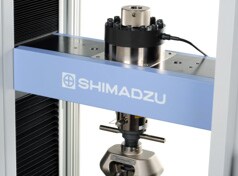
ISO 527 and JIS K 7161 require a test force accuracy that meets ISO 7500-1 Class 1 and JIS B 7721 Class 1, accuracy within 1% of the indicated test force.Shimadzu’s AG-X plus series, AGS-X series, and EZ-X series test frames and load cells meet the test force accuracy requirements of ISO 527 and JIS K 7161.
Test force accuracy of ±1%
| Full length, l3 |
170 |
|---|---|
| Parallel length, l1 |
80 |
| Gauge length, L0 |
75,50 |
| Parallel section width, b1 |
10 |
| Thickness, h |
4 |
| Grip section width, b2 |
20 |
| Grip face length, L |
115 |
1B Specimens

ISO 527 and JIS K 7161 require a test force accuracy that meets ISO 7500-1 Class 1 and JIS B 7721 Class 1, accuracy within 1% of the indicated test force.Shimadzu’s AG-X plus series, AGS-X series, and EZ-X series test frames and load cells meet the test force accuracy requirements of ISO 527 and JIS K 7161.
Test force accuracy of ±1%
| Full length, l3 |
150 |
|---|---|
| Parallel length, l1 |
60 |
| Gauge length, L0 |
50 |
| Parallel section width, b1 |
10 |
| Thickness, h |
4 |
| Grip section width, b2 |
20 |
| Grip face length, L |
115 |
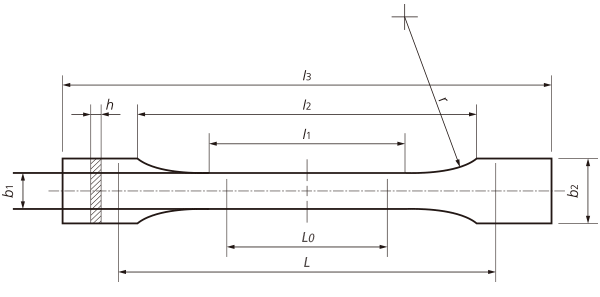
Grips, grip faces, and additional devices
Plastics come in a wide variety of types and strengths, depending on the ingredients, mixtures, and composition used. For instance, in structural materials, plastics can be pliable or rigid. There are also many types of engineering plastics and plastics used in composite materials, such as carbon fiber reinforced plastics (CFRP). To ensure tensile strength tests are performed properly, suitable grips, grip faces, and additional devices appropriate for the given material and testing efficiency must be selected. Shimadzu offers a broad line of accessories to support plastics tensile testing, such as grips ranging from manual non-shift wedge grips to pneumatic and hydraulic versions, and axial centering systems.
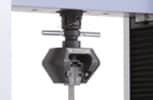 |
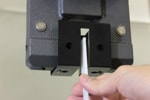 |
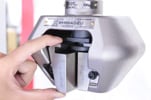 |
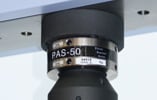 |
| Manual Non-Shift Wedge Grip | Pneumatic Flat Grips | Embedded File Teeth Grip Faces | Axial Centering Systems |
Sampling rate
For ISO 527 and JIS K 7161, the sampling rate for data acquisition must be at least as high as the sampling frequency, which is dependent on the properties of the material and accessories. For example, for a material with a gauge length (Lo) of 75 mm, a grip face length (L) of 155 mm, a minimum extensometer resolution (R) of 0.0005 mm, and a test speed (v) of 1 mm/min, a sampling frequency (f) of 22 Hz (46 msec) is required.
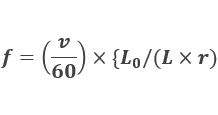
|
f |
:Sampling frequency(Hz) |
|
v |
:Test speed(mm/min) |
|
L |
:Grip faces length (mm) |
|
Lo |
:Gauge length (mm) |
|
R |
:Minimum resolution of extensometer(mm) |
Resolution must be at least half the extensometer accuracy.
AG-X plus series, AGS-X series, and EZ-X series test frames exceed the sampling rate requirements for such tests.
Strain calculation method
ISO 527 and JIS K 7161 specify the following method (Method B) for calculating strain for tensile tests in which a yield point is present.
Notes: They also include the previous method as Method A. Method B is preferred for plastics with a yield point.

|
εy |
:Yield strain |
|
ΔL* |
:Increase in grip space after yield strain |
|
L |
:Initial distance between grips |
Standard functionality in Trapezium X, Shimadzu’s dedicated materials testing software, enables straightforward calculation of tensile strain for plastics which exhibit a yield point.



